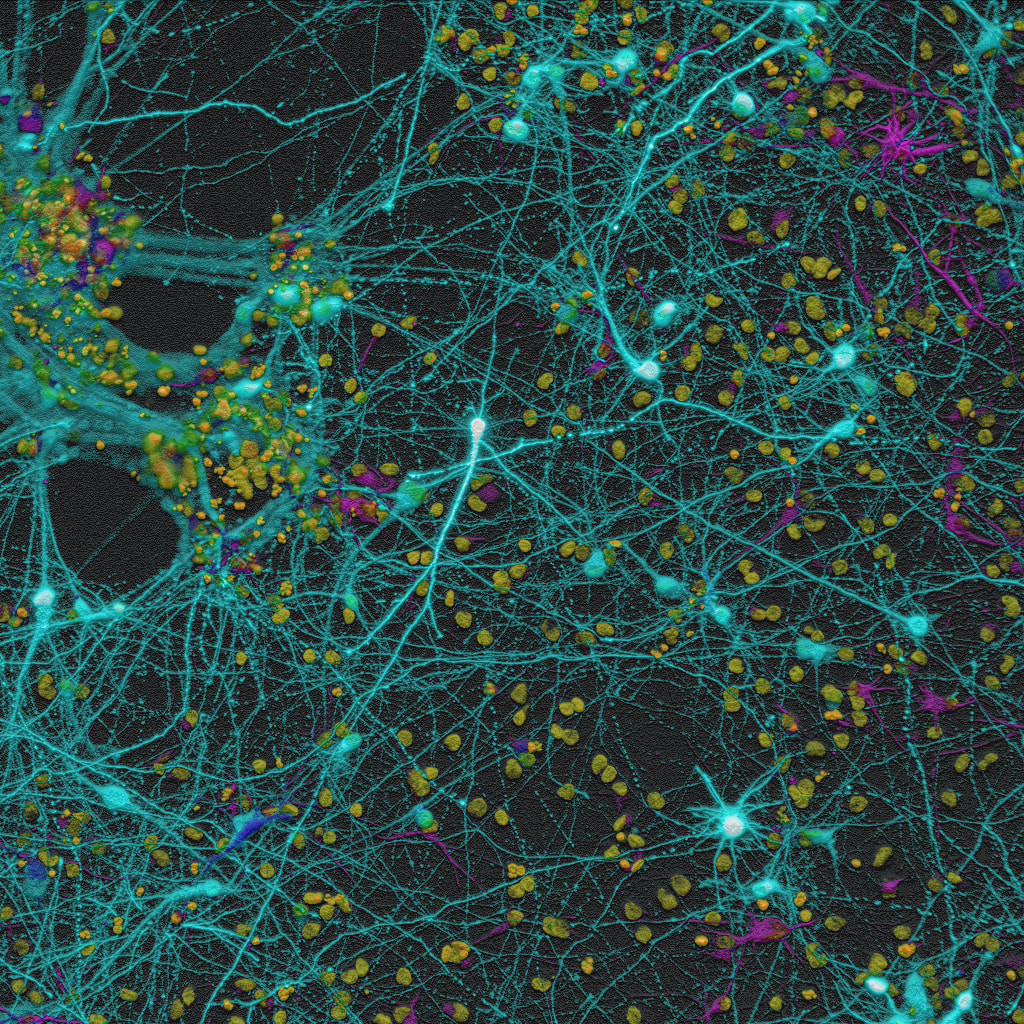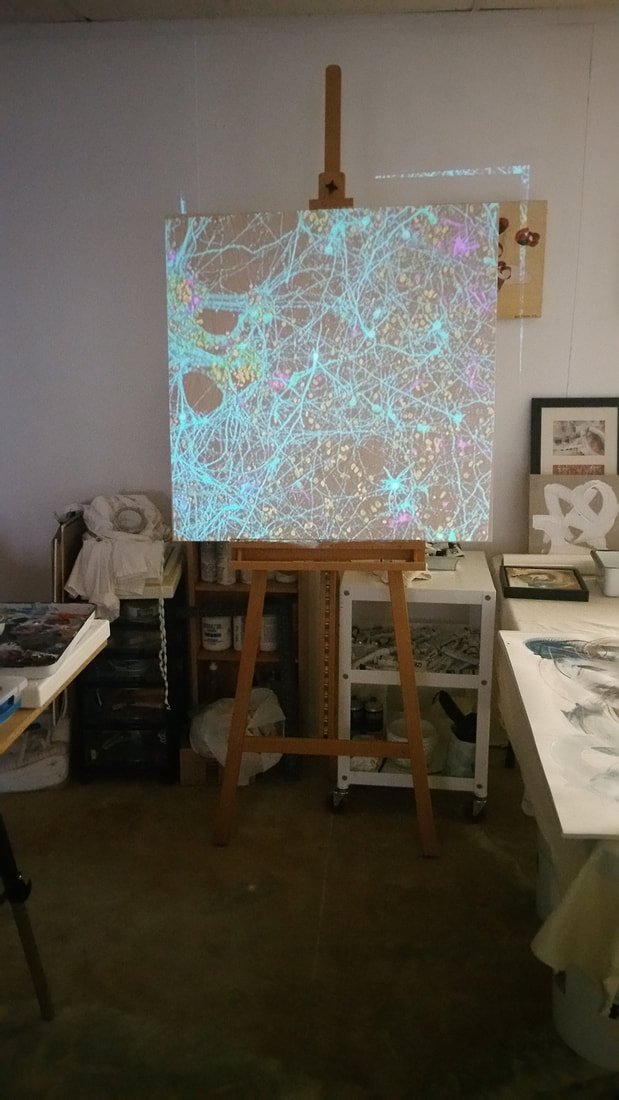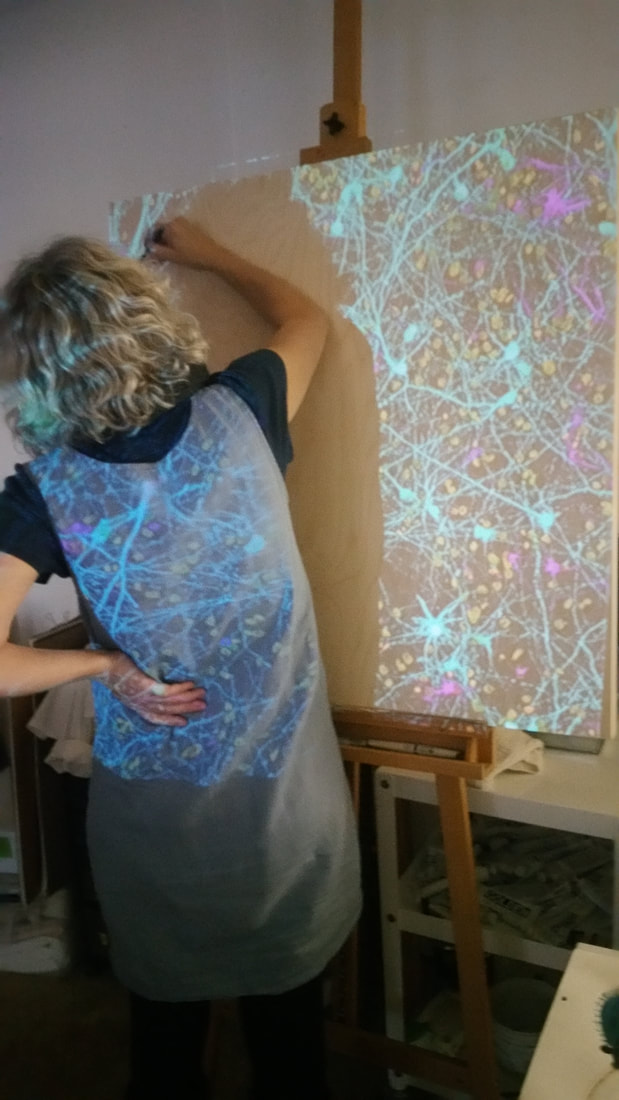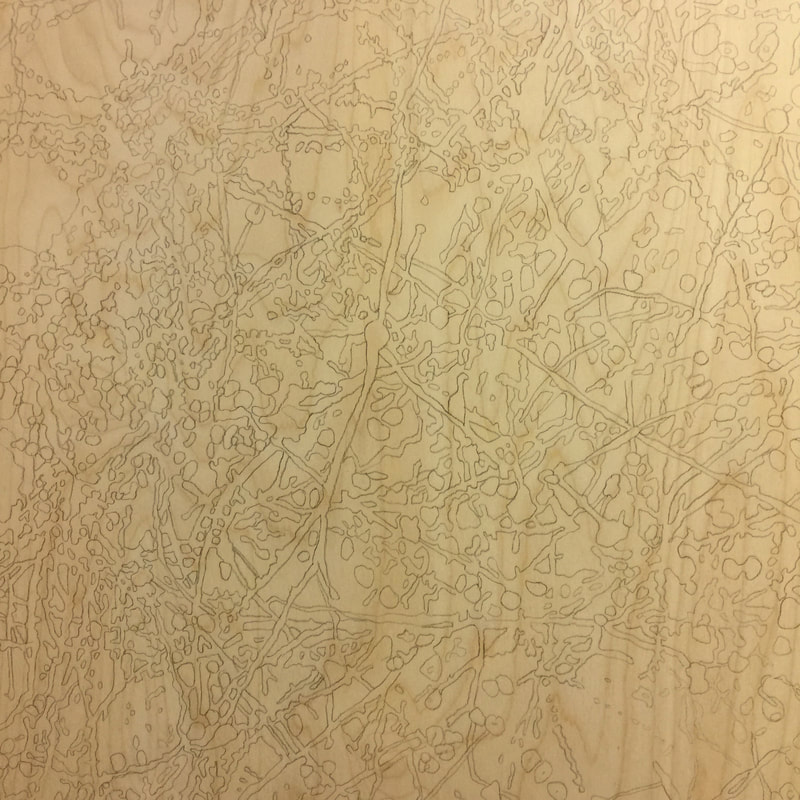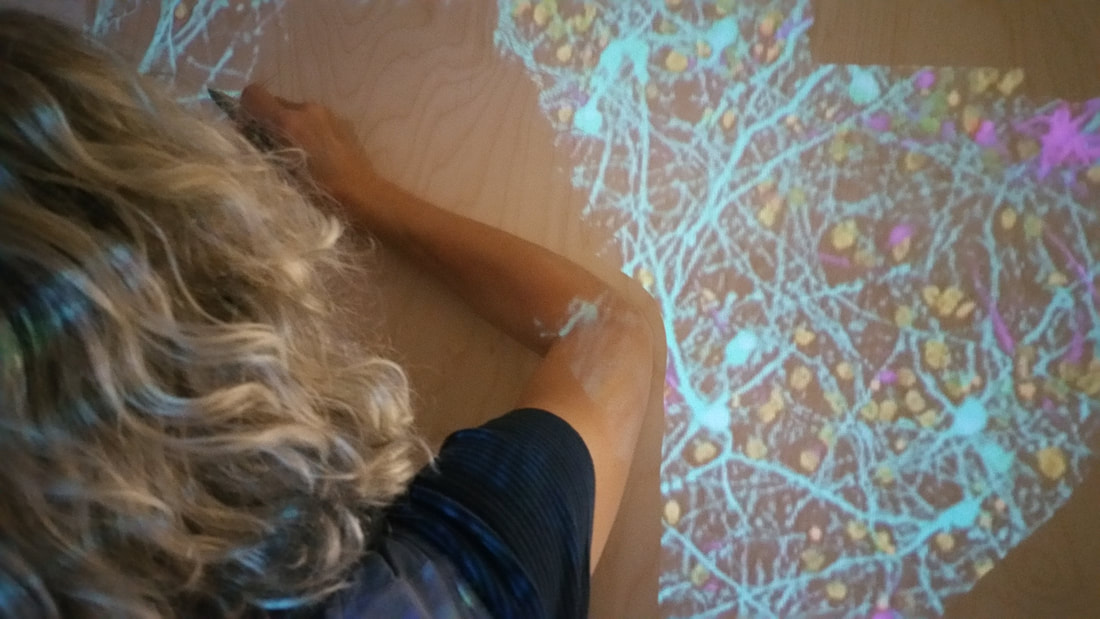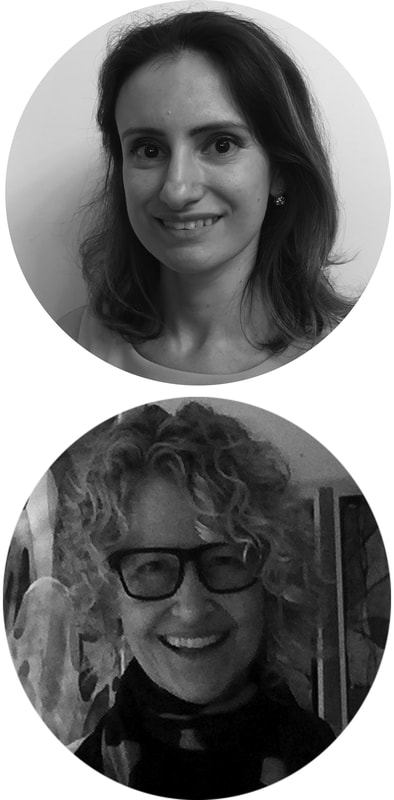|
Yana After settling on creating “Mapping Manhattan”, this week I finally got a chance to go out and buy some supplies, including a canvas and beads. I painted the canvas with black paint (though it ended up looking a bit like wood in the photo) to create the background that is typical for fluorescence microscopy images. When shopping for beads, I had an internal debate on whether I should stay true to my method of using small seed beads for recreating all “pixels” in the image; or if I should choose the bead type based on the shapes present in the actual image. I ended up choosing so called “rondelle” beads, which have multiple faces, to recreate the yellow nuclei scattered across the image. I also purchased bright purple beads for the occasional cells that Darcy pseudo-colored this way in the image. Unfortunately, the light blue beads that are required for the majority of the cells in the image were backordered. I began by studying the image (which we later discussed with Darcy as an important step in creating art) and soon realized that there were too many yellow nuclei for me to feasibly fit on the canvas. This made me think of a conversation I had with another artist earlier this year. After looking at my works “Tortured” and “All Wrapped Up”, he asked me about how I decide which parts of a microscopy image to include and which to leave out. At the time, my gut instinct was to say that I include everything. However, this is not always feasible. Coincidentally, I began to work “Mapping Manhattan” project soon after attending the “Infinite Potentials” exhibit organized by the SciArt Center. There, I spoke with several artists, who described an element of entropy that goes into creating their work, presumably mimicking the partially random chains of events that occur in nature. Similar to what I have heard before, they spoke about allowing the artwork to lead the artist, rather than the other way around. My scientific mindset struggled to understand. Yet, when I looked at the almost insurmountable amount of elements in Darcy’s image and thought of the question about leaving out certain elements, I decided to compromise. Therefore, I chose certain geometrical combinations of nuclei, which I called “motifs”, and used them as guidelines for creating a semi-random distribution of rondelle beads representing the nuclei. While trying to stay true to the overall composition, I realized that they ended up taking slightly different positions relative to each other than in the original image, but I guess that is OK. In contrast to some of my previous works, I am looking forward to working with one color at a time, layering and developing the piece over time in all 3 dimensions. Darcy What the work shows us. So, here I am again. After a week of percolating, I started my painting. One approach to image development I have used over the years is projection and redrawing. I usually work from a spontaneous abstract sketch and project it onto a much larger paper or wood panel. I redraw or paint it using a number of different approaches. I am able to study the evolution of the image as it changes in scale and media. For more on this process, visit my website darcyelisejohnson.com I have long been fascinated by the content and purpose of an image whether for science or art. What does it teach us? What information does it distill? Why is it compelling to look at? Drawing and painting are one of the ways I can study an image and gain insights into its many interpretations and incarnations. Yana and I had a long Skype conversation this morning. We discussed a re-occurring topic... What is art for? Can artistic and scientific imagery inform each other? What does this say about what we are each working on artistically in this residency collaboration? Questions, questions, questions… the driving force behind both art and science. So in response to all of these questions sometimes I need to stop thinking and just work …. to observe and understand what I am doing. Here was my experience yesterday as I began the painting… First, I projected the image Yana and I have decided to work on in our own ways. Then, I projected this digital image onto a prepared wooden panel and redrew to. Here is the finished drawing, that is waiting in my studio for the first layer of acrylic inks. So, I now have a better understanding of my purpose and direction in this project. It has come from the metacognition we all use, all the time...observing ourselves observing the world. As I was drawing, I became familiar with the image in a deeper way. I gathered details and interconnections. How is my interpretation of this image related to others I have drawn in the past? What details am I focusing on? What type of emotional response do I have to the image and why? What do I choose to leave out, because when we process an image mentally, we must leave things out, we must make choices and it is the choices we make that become the most interesting aspect of the finished work. Again, questions are the most important part of the process. Answer one and another pops up. How might this type of observation apply to science? If scientists make observations of natural phenomena in a particular situation then another scientist must be able to reconstruct this “experiment” and observe the same thing. Seems simple enough but it is incredibly difficult to individually understand the limits of objectivity in the human brain. I’m not suggesting we can't do this, in fact, I’m really saying that we need the rigor of science to codify nature in any predictable way because, without this structure, it is all art.
0 Comments
Leave a Reply. |


